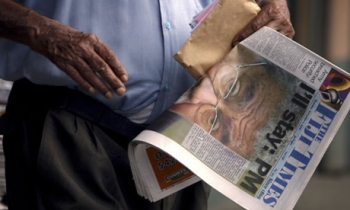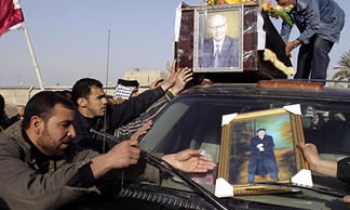London, New York, China, and Australia all have cabbies equipped with in-taxi networks designed to leverage a captive audience and entertain fares in the process. Analysts expect that troubled newspapers will be dealt yet another blow as passengers turn to technology for news and entertainment on the move.
Cabvision, a "broadcast style" InCab TV system using digital audio broadcasting (DAB) technology to deliver media content and GPRS from mobile operator O2 was launched this month in London. The programming schedule includes CNBC News, Travel and BBC Comedy. Control buttons on both sides of the cab allow passengers to change channel and control the volume.
The system automatically engages as soon as passengers enter the cab and is linked to the fare meter system. After a short safety message and introduction, and a slew of commercials, the passenger enters a menu system and can choose from a range of channels.
The Cabvision system uses a purpose built computer housed in the boot of the cab. A high resolution flat screen is integrated into the central bulk- head between the seats.
As lucrative as the London cabbies market appears to be, it is over shadowed by China’s taxi market. There are the hundreds of thousands of taxis in China’s major cities 42,000 in Shanghai and more than 66,000 in Beijing alone, with a total of 2 million Chinese employed as taxi drivers despite government attempts to limit their numbers, according to a China Daily report.
The leading in-taxi media in China is Shanghai-based Capad[TV]. Although only an estimated 1000 fully-functioning units have been installed in its home city, the company has an exclusive ten-year contract giving it the right to equip another 9000 Shanghai taxis, as well as deals giving access to 16,000 cars in Beijing and 2500 in Guangzhou.
According to research by Sinomonitor International, 10,000 taxis in Shanghai would provide 578,000 viewers per day equal to or exceeding the circulation of some of China’s largest newspapers – and taxi passengers in Shanghai earn four times the average salary of newspaper readers.
Capad[TV]’s system is similar to those used in the U.S. and Europe. Installed in the back of the headrest is a touch-sensitive, color LCD screen in direct view of the passengers and showing a range of programming:
Advertisers which have used Capad[TV] in their marketing strategy thus far include Virgin Atlantic, Nokia and Heineken.
Ambient-media company TouchTaxi’s touchscreens are appearing in Australia. TouchTaxi began its rollout last October with a pilot fleet of 50 Silver Service taxis operated by Silvertop in Melbourne.
The full rollout will involve up to a 1000 taxis in every major urban area in Australia, with a reach of 500,000 to 1m passengers per month. That figure is sure to entice advertisers who rarely see those high numbers outside of broadcast television network deliveries in homes.
According to TouchTaxi’s CEO Ruwan Weerasooriya, the company is fitting taxis that specialize in executive traffic only and has no plans to extend to the more common public routes. The move to provide an upscale market should prove lucrative in advertising revenues, he said.
There are some variations on systems used in other cities and countries: each taxi is fitted with a touchscreen unit in the headrest and an industrial PC running the Linux operating system with wireless communication, SMS and Global Positioning System (GPS) capability.
Vodafone is TouchTaxi’s communications partner, while content is supplied by NineMSN with a broad range of digital content from financial news to movie trailers and horoscopes.









